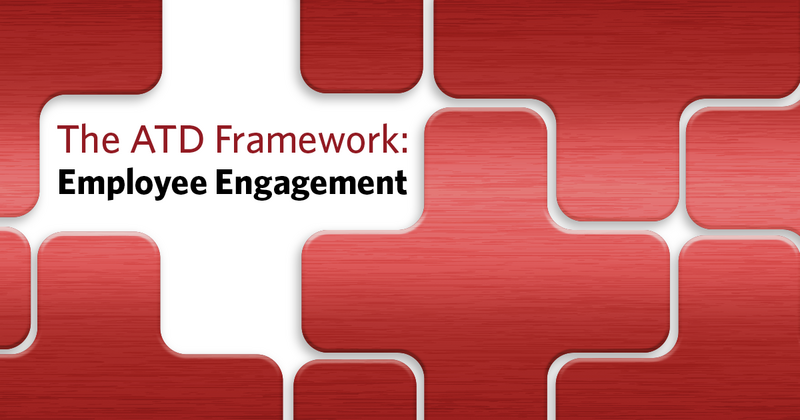ATD Blog
The ATD Talent Development Framework: Employee Engagement
Fri Aug 12 2016

ATD developed the talent development framework and puzzle to help practitioners understand the different components of talent development, and how organizations can build their own frameworks to address their unique needs. This blog series explores each component of the talent development framework, why it’s important to the field, and what resources ATD offers to practitioners who want to learn more.
Employee Engagement
Employee engagement is a critically important topic for talent development professionals. Gallup’s engagement survey shows that only 13 percent of global employees are engaged. This leaves 87 percent unengaged, indifferent, or actively disengaged. Statistics like this are alarming, especially when considering that employee engagement may determine the eventual success of a company. Gallup’s research shows employees who are actively engaged bring more discretionary effort to their work and contribute more in terms of innovation and growth. A culture of engaged employees may result in lower turnover, fewer safety incidents, lower absenteeism, and higher productivity, to name a few benefits. ATD’s research for the talent development framework shows that employee engagement is a core component for talent development efforts in many companies.
Employee engagement grows when there’s one objective in mind: to put the employee first. Employees who are treated with respect and loyalty feel valued by the organization. Understanding the top five barriers to engagement is beneficial for talent development professionals. According to Andrew Graham of Forum Corporation, unappreciative or unhelpful management is the single most demotivating factor in the workplace.
When employee engagement is a known strategic goal for the company, working toward it becomes a daily objective. Engagement first comes by acknowledging basic needs such as belonging, enjoyment, and recognition, and then overcoming them through education, balance, and demonstration. Investing in employee engagement and talent development practices may have a more cost-effective and meaningful result than new compensation and benefit plans, according to an ATD study.

We’ve assembled some additional resources to explore:
• Learn why employee engagement is so essential to your organization.
• Take the first step in creating a world-class and engaged workforce.
• Take the steps to overcome barriers to employee engagement.
• Calculate the return on investment for your employee engagement program.
• Evaluate your employee engagement strategy.
• Measuring the Success of Employee Engagement by Patti P. Phillips, Jack J. Phillips, and Rebecca Ray
• The Manager's Employee Engagement Toolbox by Peter Garber
• Coaching Employee Engagement Training by Peter Garber
• Motivating Employees in the Digital Age by Sharlyn J. Lauby
• Creating Engaged Employees by William J. Rothwell
• For more information on training delivery and other major components of talent development, check out the ASTD Handbook, 2nd Edition (Now TDBoK™ Guide, second edition).
